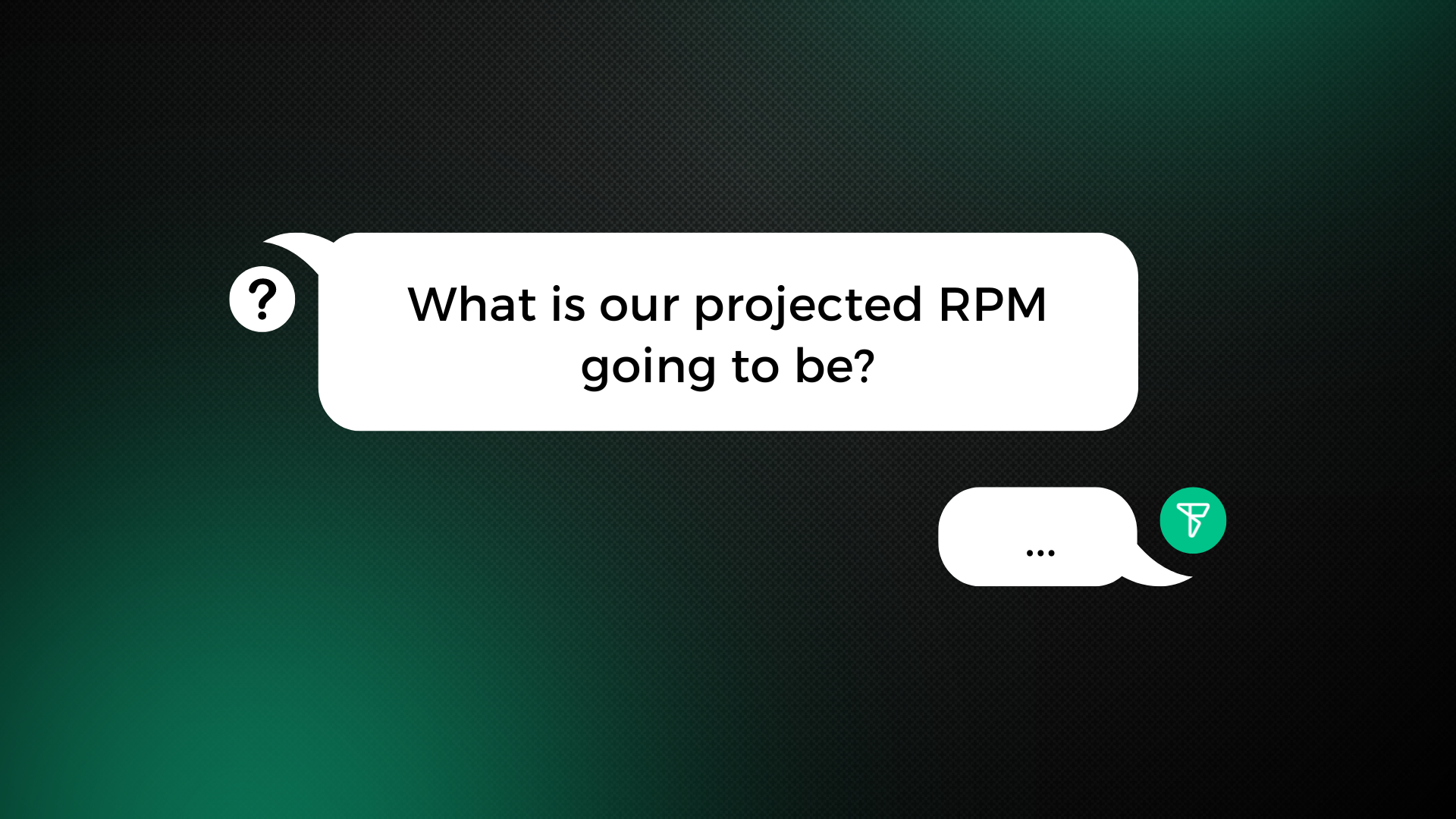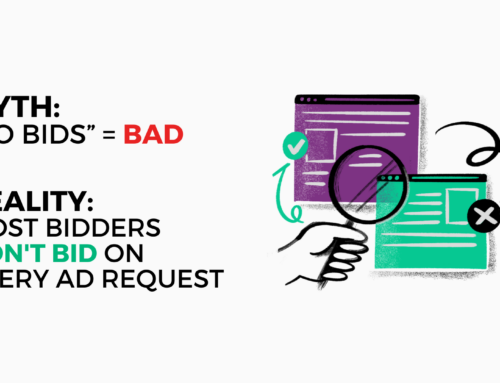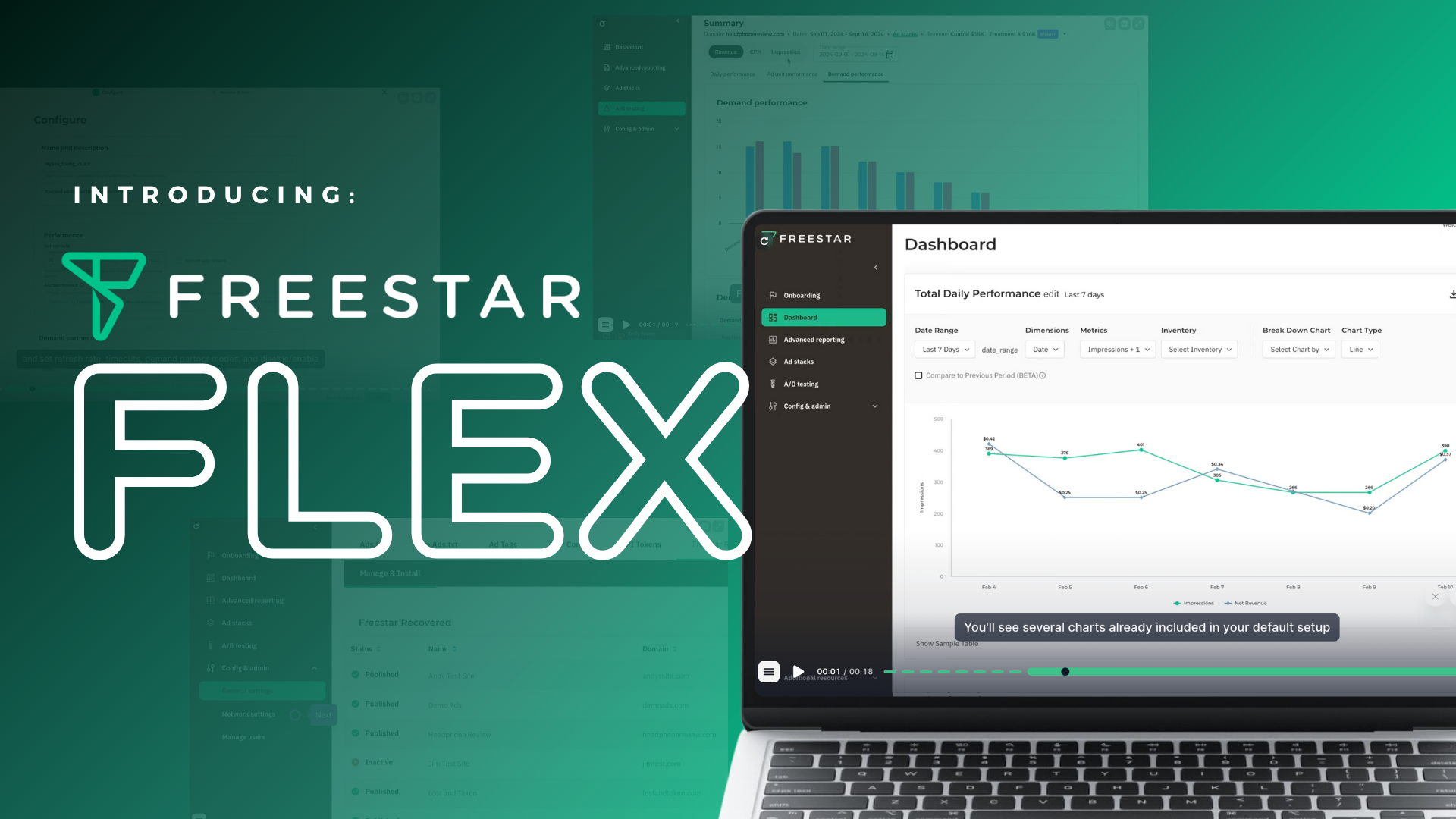Being on the Business Development team, I have the opportunity to meet with a lot of publishers across various verticals. I talk with them to understand what solution Freestar offers that would improve and maximize their ad management.
One of the most frequently asked questions is around RPM, specifically, why can’t we guarantee how much revenue they will make or what their projected RPM is going to be? To be honest, this is a difficult question to answer because it depends on various factors.
Let’s dive into what RPM is and what those factors are.
What is RPM?
RPM stands for “revenue per thousand” (with M being the Roman numeral for 1,000) and is used to calculate what publishers earn if all your advertisers were using a CPM model. This is an important metric for publishers who run ads on their website(s) because it shows how much a publisher could earn for every 1,000 impressions.
RPM is calculated by dividing your estimated earnings by the number of impressions, and the result is then multiplied by 1000. For example, a website that gets 40,000 page views a day and generates $600 in daily ad revenue has an RPM of $15.
$600 revenue / 40,000 pageviews x 1,000 = $15.00 page RPM

How is RPM determined?
The reason why I tell publishers “it depends” is because RPMs vary for many different reasons. It’s important to remember that every publisher is different from their website layout, their SEO strategy and ranking, to their traffic so there’s no magical formula that factors all of these differences and provides a projected RPM.
These are some of the factors that impact RPM:
- Seasonality – There are seasonal trends within advertising and they’re tied to brand budgets (January seeing the lowest and November seeing the highest spend) and the type of content on your website. As a result, RPMs fluctuate with seasonality.
In the summer, for example, we see a slump in revenue. If we were to give you a projected RPM based on your revenue in July, that would not be accurate and would not factor in that traffic is slower than usual. On the other hand, if you’re a baseball site, your traffic will probably be higher in the summer months compared to a ski website that has higher traffic in the winter. - Content Niche – Some verticals perform better than others and this can vary on seasonality as well. For example, if it’s the Super Bowl, the RPMs on a football-based or sports-based website will do much better than a cooking website. But, let’s say you are a cooking website and decide to do a series on Super Bowl party food ideas, then you can still tap into advertiser budgets.
- Traffic Source – Higher quality traffic tends to have higher RPMs. Advertisers will pay more for the audience they’re targeting and this can mean different things for different campaigns (geos, gender, user identity, etc.).
- Engagement – The better engagement (i.e. time on page, bounce rate) you have the higher your RPM can be. If you have high engagement on your website, that can translate to higher quality traffic and viewability. Viewability over 70% gives you access to premium campaigns which unlocks better paying ads.
- Advertiser Budgets – It all comes down to advertiser budgets at the end of the day and what spend they have available for campaigns. The best way to optimize for this is to improve your overall website and increase viewability (higher viewability = premium campaigns).
- SEO – It’s important to focus on building strong content that your audience cares about and a website that puts user experience first. This could mean creating a long scroll experience to increase time-on-page, recirculating content to provide an easy path for user t move from page to page or improving your traffic source (organic search has higher RPMs). At Freestar, we offer publishers workshops and one-on-one time with our Audience Development to strategize ways to improve RPM.
What is my projected RPM?
Like we shared in this article, the answer to this question is it depends. There are so many factors to consider from seasonality, traffic souce, engagement, etc. The next time you’re asking this question don’t be surprised if you can’t get a straight-forward answer.
If you’re interested in learning what Freestar can do for you, you can get started today by completing this form.





